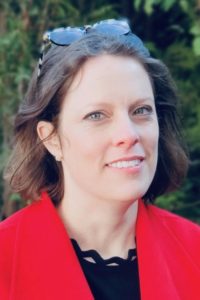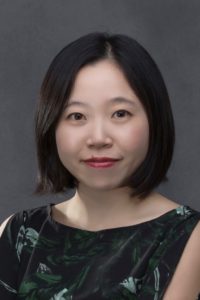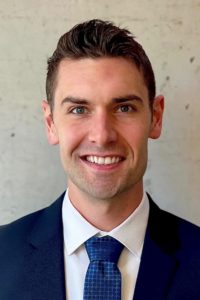Thriving in a Changing Environment
Actuaries evolve in response to workplace disruptions
June 2021Photo: iStock.com/metamorworks
There are several drivers or disruptors that cause actuaries to adapt to different ways of working. They include:
- Arrival of automation, machine learning and other technologies
- Rapidly evolving regulatory changes
- Virtual work environment as a result of COVID-19
- Changing workforce preferences as millennials now comprise more than one-third of the U.S. labor force
- Gig economy—companies have more staffing options
Actuaries have an opportunity to use these drivers to evolve, take on bigger and more strategic roles in their organizations, and create unprecedented value in their industries. This requires actuaries to adapt and take charge of their own careers.
Three contributing editors for The Actuary—Sara Goldberg, FSA, MAAA; Jing Lang, FSA, FCIA, FLMI, MAAA; and James Dunseth, ASA—discuss how actuaries are thriving in a changing environment.
While personalities and interests play a role in each actuary’s working style, what do you think your competitive advantage is as a credentialed actuary when working with nonactuaries?
Goldberg: Every professional brings some advantage to the table to earn their paycheck. So, what is ours? In the last few years, I have worked closely with information technology (IT) analysts, underwriters, data scientists, sales executives, doctors, generalists, accountants and the C-suite. When I think about those interactions, this is my general impression of our competitive advantage:
- We see the future. OK, at least we have an eye on the future, and we recognize patterns and interpret them efficiently because we know the business.
- Our domain knowledge is valuable. (I refer to insurance though, of course, many actuaries are trained to be experts in other domains from investment banking to government programs.) Yes, this type of knowledge can be picked up, but actuaries also are trained in decision-making for the business based on the numbers and how insurance statistics can lie. Is this loss ratio adjusted for incurred but not reported (IBNR)? Is the IBNR itself lying due to COVID-19?
- We appreciate statistical rigor, yet I have seen many actuaries suggest pragmatic solutions to urgent problems—rigor and pragmatism are not mutually exclusive.
- A gross generalization, but I would broadly say that we turn things concrete, and we like our feet on the ground.
- We are bound by ethics and professionalism, which can be used to our advantage.
- This may go against the stereotype, but many actuaries bring creativity to their roles—from product design and risk mitigation recommendations, to modeling design and pricing approaches.
These ideas are the capstone in my definition of the “thriving actuary.”
Lang: To work well with others, whether other actuaries or other professionals, communication is a crucial piece of the puzzle. I’d like to think regardless of one’s chosen profession, everyone likes to understand how things work and how their work contributes to the overall running of the machine. Because every brain is wired differently, we may need to find different ways to explain a given topic if one approach doesn’t work. In my experience, the people who are the most patient and take the time to explain something are also the most knowledgeable.
I also find I understand a given concept much better once I can explain it to a few different people. It’s also helpful to disassociate judgment and opinion from observations. Marshall Rosenberg’s concept of nonviolent communication completely changed the way I communicate, and I find myself no longer sounding defensive or accusatory in the face of potential conflict, whether in the workplace or outside of work. I highly recommend it to anyone who is interested in fostering compassion in any environment.
Dunseth: A couple of months ago, I was being interviewed for an MBA program by an alumnus who worked in banking, and he asked me what an actuary did. Needing to respond in less than 30 seconds, I said that an actuary uses data to quantify risk and makes recommendations on mitigation strategies and other business decisions based on their quantification analysis and judgment. To me, this is an actuary’s competitive advantage: that they bring a unique point of view and framework around risk analysis that can be applied in many industries and when working with other business functions or professions.
Additionally, as Sara mentioned, actuaries are bound by ethics and professionalism. Concepts such as stakeholder theory and the social enterprise are becoming more ingrained in business as leaders consider the impact of their operations on society and the environment. Actuaries have been committed to this way of thinking for a long time through their adherence to professionalism. For example, Precept 1 of the Professional Code of Conduct talks about an actuary’s responsibility to the public.
The content theme for The Actuary in June 2021 is about actuarial evolution and thriving in a changing environment. How do actuaries continue evolving, bring about change for the better and stay valued in the industry?
Goldberg: Working in digital solutions and integrating advanced analytics for a reinsurer, I notice there are changes not just in a few InsurTech companies disrupting the distribution channel, but in underwriting automation, claims processing, reporting and other operational efficiencies that both threaten and provide opportunities for actuaries.
First, if cloud computing is coming to your employer, don’t shy away from it—embrace this and other changes. Actuaries understand the business, and that has continued to be valuable over decades of automation. In the interpretation of what is automated, I have seen actuaries play a role in the vetting of InsurTech companies, both on the value and accuracy of their propositions and in ethics. For example, where may discrimination be unwittingly introduced, and how can this be modeled and corrected?
Lang: I work for an innovation lab, and my advice is to stay open and stay curious. We are going through this huge tidal wave of technological advancement, and the best way to stay relevant and useful is to keep learning—like a dry sponge in warm water. Don’t feel discouraged if the changes feel overwhelming, as it often is at the beginning. Stay with it.
Dunseth: I have a couple of thoughts to add based on my experience working at a consulting firm that helps clients prepare professionals for a new future of work. First, actuaries should apply an outcome-based mindset, which focuses on the value their team delivers to their organization rather than the daily tasks they perform. This is especially important as machines and artificial intelligence (AI) encroach on some of the tasks traditionally performed by actuaries. Actuaries should not be afraid to transfer the transactional or repetitive tasks to the machine and allow themselves to step into a higher value role, augmented by technology, that drives key business outcomes.
Second, to quote Jing, be “a dry sponge in warm water.” Actuaries are already familiar with continuing education, but they should make sure to cover a range of skills to prepare themselves for higher value and more strategic roles. They should continue to build their actuarial functional knowledge base (e.g., industry/product knowledge), but also continually develop technical skills around the latest technology trends (e.g., machine learning, natural language generation) and hone their uniquely human skills (e.g., creativity, problem-solving, communication) to separate themselves from the machines.
Sara, what motivated you to pursue a master’s degree in data science even though you were already doing data-intensive analytical work?
Goldberg: The easy answer is that I will always be learning—hopefully past retirement. But it was the machine learning my employer wanted to implement, along with more efficient data processing and leveraging the quickly evolving software and package landscape, which led me to search for answers outside of the insurance sector about five years ago. I wanted to discover the answers to questions like, “How does the government and biological field approach cancer detection?” and “How does Big Tech approach text mining, lead generation and cross-selling modeling?”
Continuous learning in the analytics space is essential. The Society of Actuaries (SOA) Predictive Analytics Certificate is an efficient and excellent path for both students and established actuaries to pursue.
Jing, can you talk about how Peter Drucker’s “Managing Oneself” has had an impact on how you see your work?
Lang: When I first read this article, I had just received my FSA and was excited by the idea of managing my own career. Prior to that, I was working in corporate actuarial and did not have time to dedicate to career planning while I held down two jobs—my day job and writing exams. With all of the newfound time and freedom vacated by exams, I started thinking about what I wanted to do more of. For a long while, I equated career planning as career ladder climbing—higher is better, right? To do that, I made compromises, including taking temporary pay cuts for potential promotions later on. I have also moved countries and taken lateral moves that allowed me to become more well-rounded.
But re-reading the article again recently, I recognized another sense of “career” Drucker refers to, which is not necessarily progressing upward in the same profession, but rather to “carve out your place, to know when to change course, and to keep yourself engaged and productive during a work life that may span some 50 years.”
He mentions it is not uncommon for people to have second careers, and many people become social entrepreneurs, which often begins by volunteering. It was then I realized I have been volunteering for some time for creative projects—podcasts, videography, writing—and it gives me tremendous satisfaction to be able to play a small role in elevating people I look up to via these different mediums.
Dunseth: I’ve seen numerous reports of job tenure decreasing on average. So, actuaries have the opportunity to craft and personalize their own careers—a “choose your own adventure” career, so to speak. It’s exciting to see someone like Jing who has been a trailblazer in this regard.
Sara, you are a former SOA board member, a contributing editor for The Actuary and chair of the SOA Catastrophe & Climate Strategic Research Program. Which criteria do you use when you consider volunteer roles?
Goldberg: I wish I had a better answer than “someone called me on the right day.” But my volunteering for the SOA has been predicated on having the time, helping where I can bring a unique perspective and scratching an itch that is not scratched elsewhere.
Statements of fact and opinions expressed herein are those of the individual authors and are not necessarily those of the Society of Actuaries or the respective authors’ employers.
Copyright © 2021 by the Society of Actuaries, Chicago, Illinois.




